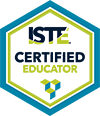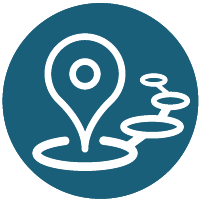Enhancing Educator Technological Pedagogical Knowledge for Effective Digital Fluency Integration
,
HBGCC - 217A, Table 6
Other presentations in this group:
- Presentation 1: Online Learning Communities And Secondary Educators’ Tech-Enhanced Instructional Practices: A Correlational Study
- Presentation 2: Stakeholders’ Feedback on a Personalized, Online Platform for STEM Teacher Learning
- Presentation 3: Supporting Teachers’ Implementation of Technology-Enriched PBL: What Research Tells Us
- Presentation 4: Bridging the Digital Divide: Insights from Elementary Teachers on Technology Coaching
- Presentation 6: Media Arts in STEAM Education: Enhancing Skills for Emerging Technologies
- Presentation 7: Virtual Teachers’ Understanding of Students’ Self-Efficacious Behaviors in Digital Learning Environments
- Presentation 8: Power of Perspective: Professional Learning through the Eyes of Black Women Teachers
Session description
Framework
My research is grounded in the TPACK (Technological Pedagogical Content Knowledge) framework, which emphasizes the intersection of technology, pedagogy, and content knowledge as key to effective teaching in the digital age. By assessing educators' preparedness through this lens, the research highlights how technology can be seamlessly integrated into instructional practices to align with the NYS Computer Science and Digital Fluency standards.
Additionally, the research draws on andragogy—the theory of adult learning—focusing on how educators, as adult learners, require self-directed, practical, and relevant professional development opportunities. This aligns with the need for flexible, contextualized learning that respects educators’ prior experiences while helping them acquire new skills for integrating technology into their instruction.
The concept of self-efficacy also plays a critical role, as the research explores educators' beliefs in their ability to effectively implement technology in the classroom. By enhancing educators' self-efficacy through targeted professional development, the study aims to empower them to confidently apply the digital fluency standards in ways that meet the needs of diverse student populations.
Methods
My research utilized a mixed-methods design to explore the preparedness of teachers and technology leaders in implementing the NYS Computer Science and Digital Fluency standards. This approach combined both quantitative and qualitative data to provide a comprehensive view of educators' technological pedagogical content knowledge (TPACK) and self-efficacy in various educational contexts.
**Design**
The research was conducted in two phases. The first phase involved surveys to collect quantitative data, and the second phase used semi-structured interviews for deeper qualitative insights. The combination of these methods allowed for cross-validation and a more holistic understanding of the participants' experiences.
**Participants**
Participants were selected through purposive and snowball sampling to ensure diversity in representation, including educators from urban, suburban, and rural districts across New York State. The sample included teachers and technology leaders responsible for implementing technology integration in their schools.
**Data Sources and Collection**
1. **Surveys**: Participants completed a survey that assessed their TPACK, self-efficacy regarding technology integration, and familiarity with the NYS Computer Science and Digital Fluency standards. The survey included Likert-scale questions to gauge confidence levels, specific challenges, and perceived readiness.
2. **Interviews**: Follow-up semi-structured interviews were conducted to gather qualitative data. Questions focused on specific experiences with technology integration, challenges faced, and strategies for professional growth. Interviews were recorded and transcribed for analysis.
**Methods of Analysis**
1. **Quantitative Analysis**: Survey responses were analyzed using descriptive statistics to summarize participants' self-efficacy and preparedness levels. Inferential statistics, including t-tests and ANOVA, were applied to determine significant differences in preparedness across different demographic groups (urban, suburban, rural).
2. **Qualitative Analysis**: Interview transcripts were analyzed using thematic coding to identify common themes related to challenges, successes, and needs in implementing digital fluency standards. Coding was conducted through Dedose software, and patterns were identified to compare experiences across different educational settings.
**Replicability**
This study can be replicated by following the mixed-methods design outlined above, with the same selection criteria for participants. Replication could occur in other states or districts by adapting the focus to different educational standards, while maintaining the core emphasis on TPACK, andragogy, and self-efficacy. The survey instruments and interview protocols are designed to be adaptable, enabling other researchers to explore similar questions in their local contexts.
Results
This mixed-methods explanatory sequential study of K–6 classroom teachers and education technology leaders (ETLs) examined their technological pedagogical content knowledge (TPACK) and awareness of New York State’s Computer Science and Digital Fluency (NYS-CS/DF) Learning Standards. Combined, the findings provide guidance for a successful rollout of the standards. The quantitative data from this study suggested teachers were fairly knowledgeable of the pedagogical and content TPACK domains and less knowledgeable in domains including technology. ETLs self-assessed higher in all technological areas and can likely use this knowledge to assist teachers in rolling out the standards. Qualitative insights from interviews revealed four overarching themes: (a) Improving Survey Participation to Foster Self-Reflection, (b) Adapting to Evolving Educational Landscapes, (c) Empowering Educators Through Professional Development, and (d) Addressing Technology Equity and Access. This research suggested support and resources that may enhance teacher technological skills, possibly leading to successfully integrating the NYS-CS/DF Learning Standards. Additionally, this study contributes to the TPACK framework research on practicing elementary teachers.
Importance
The educational importance of this study lies in its practical application for successfully rolling out the NYS Computer Science and Digital Fluency standards. The findings highlight the need for targeted professional development, particularly in enhancing teachers' technological knowledge. By identifying gaps in TPACK and showcasing the strengths of education technology leaders (ETLs), the study provides actionable insights for bridging these gaps. For conference audiences, this research offers valuable guidance on addressing technology equity, improving teacher preparedness, and fostering collaboration between teachers and ETLs, which is essential for integrating digital fluency standards in classrooms.
References
Can be found here
https://www.proquest.com/openview/3537c768bf067d46eef3c84072a20bef/1?pq-origsite=gscholar&cbl=18750&diss=y
Presenters


Session specifications
Topic:
Grade level:
Audience:
Attendee devices:
Attendee device specification:
Laptop: Chromebook, Mac, PC
Tablet: Android, iOS, Windows
Subject area:
ISTE Standards:
Change Agent
- Connect leaders, educators, instructional support, technical support, domain experts and solution providers to maximize the potential of technology for learning.
- Personalize support for educators by planning and modeling the effective use of technology to improve student learning.
TLPs:
| Related exhibitors: | SchoolAI, Book Creator, LEGO Education, CodeMonkey Studios, BirdBrain Technologies, WeVideo, Inc., Padlet |

 Back
Back Trips and Tours
Trips and Tours